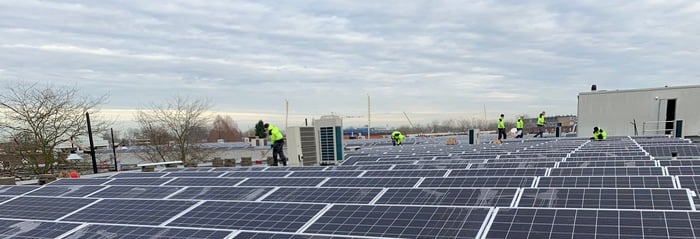Solar panels were considered the most expensive part of the PV system. Now that the panel prices have fallen, is the inverter the most expensive part of a solar energy utility? What about the substructure? Or power optimizers? All the previous options are the wrong answers. The most expensive part of a solar energy utility is the property on which the system is installed. Remember this when making a purchase.
The most expensive part of a solar energy utility is therefore the property on which it is installed. And this is no joke. It may be less conventional to think from this point of view, but the value of the property can add up to a hundred times of the value of the solar utility to be ordered. For this reason, one of the most important things when buying a solar power plant is to understand the link between the solar plant and the property, primarily the roof and the electrical system.
Often, solar tenders are very enthusiastic about comparing yield forecasts. However, this is secondary to the long-term sustainability of the property. For example, repairing a roof problem can sometimes cost more than the value of the annual yield of the utility. We admit, of course, that it is also important to compare the life cycle costs and costs of the plant. The highest efficiency is provided by an intelligent system that optimizes the operation of the panel at panel level.
There are many things to consider when choosing a substructure. It should be designed to match your roof material. On a flat roof, the substructure must distribute the weight evenly over a sufficiently large area and have no sharp corners. Under no circumstances may the "carriers" press into the bitumen. The substructure must be able to allow rain and meltwater to drain freely and its structure must not form a dam. Thermal expansion of the metal substructure can damage the roofing, so ensure this is taken into account in construction and installation. Remember not to install solar panels on the rain drains. And make sure that the distance between the panels is large enough that even the service technician with big feet can move between the rows.
PV systems are surprisingly light. At its lightest, an additional weight of about
15 kg /m2 is achieved. The extra load is greater for taller buildings, windy places and small roofs. Before installating, check ( in consultation with the construction expert), that the structures can withstand the pressure of the solar energy utility.
The photovoltaic system will be on your roof for the next 30 years. That is a long time, for example for connectors and cables. Although solar energy systems require very little maintenance and service, we still recommend that you be prepared for potential failures. The best insurance for any property is that the solar panel is equipped with power optimizers. They enable the system to monitor the operation of individual panels and automatically shut down faulty components. This reduces, for example, the risk of flashover (arc flash) in the event of a fault. For firefighters, power optimizers are a godsend gift. Solar panels produce electricity - even in problem situations. Spraying water on the roof is not pleasant if the roof has a voltage of 1000 volts.
With power optimizers, you can lower the voltage of your roof to a safe level and let the emergency services operate normally.
Our last tip is; rely on knowledge and experience. Installing a solar energy utility is not nuclear physics or aerospace science, but it does require experience on the roof. Planning and installation should take into account the roof, roof construction technique, electrical system and occupants of the property.
Europe's leading photovoltaic suppliers have installed several megawatts of solar energy. The best have experience working with global retail chains, major construction companies, renewable energy consultants, pension insurers and other major real estate owners. Solnet has all this across multiple regions in Europe.

COMMENTS